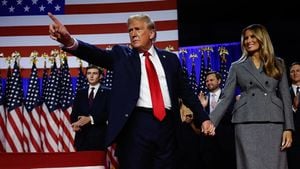Mike Tyson, the legendary former heavyweight champion, is making headlines once again as he prepares to step back inside the ropes at the ripe age of 58. Nearly two decades after his last professional match and 39 years since his explosive debut, Tyson's upcoming bout on November 15 against 27-year-old YouTuber Jake Paul at Arlington, Texas' iconic AT&T Stadium has sparked both excitement and controversy.
It's been over 7,000 days since Tyson last fought professionally, with the specter of his career's highs and lows looming large as Tyson re-emerges. His last professional outing ended with a loss to Kevin McBride back in June 2005, and though he participated in an exhibition match against Roy Jones Jr. just four years ago, many wonder how the aging fighter will fare against Paul, who has been steadily on the rise within the boxing world.
The decision to match Tyson against Paul has raised eyebrows across the boxing community, with critics questioning whether such bouts are responsible, especially for older athletes who have faced years of physical toll inside the ring. Notably, the Texas Department of Licensing and Regulation has placed specific restrictions on this highly publicized event, including adopting two-minute rounds rather than the standard three and using 14-ounce gloves instead of the typical lighter versions. These measures hint at the growing concerns over Tyson’s health and well-being.
“I’m not going to act like I’m frightened. I’m just going to be cautious,” Tyson remarked recently, showcasing his psychological approach as he readies for combat. Many observers, including notable figures from the boxing community, have criticized the decision to sanction such fights. Promoter Frank Warren expressed disbelief, stating, “Mike Tyson is 58 years of age and he shouldn't be fighting. It’s simply ridiculous.” Barry McGuigan, another former champion, echoed those sentiments, emphasizing the physical degeneration athletes, especially boxers, face as they age. “A 58-year-old man shouldn't be fighting, simply put,” he declared.
For Tyson, potential health risks aren't just academic; as years pass, the physical impact of boxing can lead to serious neurological concerns. Dr. Nitin K Sethi, who serves as both medical commentary and ringside physician, pointed out the inherent dangers of aging fighters re-entering competitive scenarios: “When you talk about fighters who are above the age of 40, you worry about two things… One, whether they are more predisposed to traumatic brain injuries, and second, chronic neurological injuries from previous fights.” Tyson’s long history—completing 58 professional fights and suffering the punishing effects of the sport—adds to this apprehension.
Despite the forewarnings, Tyson remains undeterred. He stated confidently before the fight, “My body is in overall shape than it has been since the 1990s,” though still confronting the harsh realities of biology and age. Critics see the spectacle as little more than sponsorship-driven entertainment, but Tyson aims to prove otherwise. His matchup with Paul—a fighter who has turned online fame to boxing notoriety—raises questions about dignity, authenticity, and the nature of sport itself.
For Paul, the fight is less about merely competing against one of boxing's greats and more about continuing to assert his place as not just a social media influencer but as someone who belongs within the boxing community. He believes his ability to knock out opponents and garner significant views through his facade of success blurs the line between sport and entertainment. Prior to this bout, Paul earned respect through victories against otherwise unremarkable competitors, with only one loss against professional boxer Tommy Fury. He has consistently wooed audiences with over-the-top predictions and marketing. Paul boasted, “If I have the opportunity to fight a legend, it is certainly an honor.”
This event is noteworthy not only for its two contrasting figures but also for its significance as it shares the card with another prominent clash—Katie Taylor versus Amanda Serrano. The pairing of these two illustrious women fighters emphasizes the current momentum of women's boxer growth and reflects its affirmation within the sphere historically dominated by male figures. Taylor, the undisputed lightweight champion, and Serrano, who has seen success spanning seven weight divisions, are looked forward to headlining their rematch, which sets the stakes high for women’s boxing.
Streaming from Netflix marks the shift of boxing matches onto widely accessible platforms. Leading up to Tyson vs. Paul, Netflix has positioned itself as the main host of the event to tap its massive subscriber base. With 282 million subscribers, the fight is set to attract diverse international audiences aside from the expected live attendance of around 60,000 fans. Besides boxing purists, entertainment seekers will undoubtedly tune in as Netflix broadcasts across five languages, positioning itself at the forefront of merging sports with entertainment.
With excitement building and critics clamoring, the spotlight intensifies on this unusual bout of celebrity versus legend. It arouses passionate discussions across social media, forums, and traditional broadcasting, provoking those who mourn the deterioration of boxing as once purely noble. Yet, for Tyson and Paul, each has their motives and ambitions—can Tyson defy age, or can Jake Paul seize the moment at history's expense, all captured within the spectacle of sport?
On the eve of battle, fans are left to ponder one significant question: will Tyson’s storied past envelop Paul’s aspirations, or will the newly minted fighter knock the aura of greatness down for good? Whatever the outcome, one thing remains certain: Tyson's return is more than just another fight; it's the summation of decades of grit, perseverance, and spectacle—a narrative intertwining the essence of boxing.



